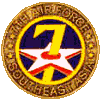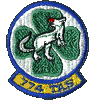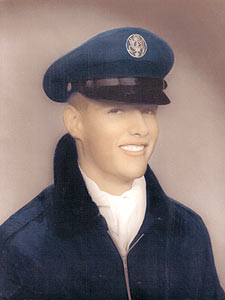George Wendell LongAirman First Class774TH TAC AIRLIFT SQDN, 463RD TAW, 7TH AF United States Air Force 30 September 1948 - 12 May 1968 Medicine Lodge, Kansas Panel 59E Line 007 |



| |
 
|
 Courtesy of his family |
The database page for George Wendell Long
"To live in the hearts we leave behind,
|
Notes from The Virtual WallThe Kham Duc Special Forces camp (A-105) was located on the western fringes of Quang Tin Province, South Vietnam. The only village in the area, located across the airstrip, was occupied by post dependents, camp followers and merchants. In the spring of 1968, it was the only remaining border camp in Military Region I. Backup responsibility for the camp fell on the 23rd Infantry Division (Americal), based at Chu Lai on the far side of the province. Kham Duc had several outlying camps; of particular interest is Ngok Tavak, about 5 miles distant.Beginning at about 0300 on 10 May 1968, Ngok Tavak came under heavy attack by a North Vietnamese Army infantry battalion, an element of the 2nd NVA Regiment which was moving into South Vietnam from Laos. In a pitched battle, the small force of defenders staved off immediate defeat, but by noon on 10 May it was clear that Ngok Tavak would have to be abandoned. After destroying equipment and supplies which could not be carried out, the survivors began the move to the main camp at Kham Duc. They were picked up by helicopter midway to Kham Duc, arriving at the camp at about 2100 (9 PM) on 10 May. The defending force at Ngok Tavak had incurred numerous losses in both known dead and missing soldiers. Kham Duc itself had been under attack by other elements of the NVA 2nd Regiment since the early morning hours of 10 May and the situation there was deteriorating rapidly. The camp was under constant attack through 11 May. Although additional Allied troops were airlifted in, the 1st NVA Regiment also entered the battle and by the morning of 12 May there was serious doubt if the camp could be held in against an enemy force of some ten to fifteen thousand men. By noon, the US 23rd Infantry Division commander had decided to withdraw entirely from Kham Duc. The evacuation was disorderly and, at times, verged on complete panic. One of the aircraft used in the evacuation was a C-130 HERCULES transport (tail number 60-0297) assigned to the 773rd Tactical Airlift Squadron but being flown by a crew on temporary duty from the 774th TAS based at Mactan Air Base, Philippines. The C-130 aircrew consisted of
The evacuation continued and by nightfall of 12 May the vast majority of Allied troops and Vietnamese civilians had been evacuated from the camp. Kham Duc, the last border outpost in northeastern South Vietnam, had fallen to the enemy.
Two years and two months later, on 4 Sep 1970, the Americal Division recaptured Kham Duc. While the remains of a number of "missing in action" personnel were recovered, the wreckage of the C-130 could not be located and the remains of its crew have not been recovered.
Details of the Battle of Kam Duc abound in print and on the Internet. The following sources are cited:
|
|
Top of Page
www.VirtualWall.org Back to |
With all respect
Jim Schueckler, former CW2, US Army
Ken Davis, Commander, United States Navy (Ret)
Memorial first published on 12 May 2002
Last updated 08/10/2009